Kayak Expedition Reveals Why Everglades National Park Deserves Saving
My kayak knifed as a result of warm Gulf waters as quickly as it could run. We experienced outfitted our boats with 10-foot masts, outrigger arms on inflatable sponsons, and two-foot-prolonged leeboards, pleased to be plying the wind instead of slogging by paddle. When I shook out the sail reef for additional velocity, the sponsons skipped over waves like thrown stones. Keeping limited to shore, I modified my study course by tapping the rudder pedals to dodge sharp mangrove stumps. I briefly shut my eyes, pleased to have escaped wintertime, immersed in a sense of mastery as I inhaled the rotten-egg fecundity of the Everglades. America’s most outstanding swamp stretched limitlessly before me.
I experienced never found so lots of various chicken species in one particular location, often clutching fish in their talons or beaks squadrons of pelicans, teams of ducks, musterings of storks, and herds of curlews. All early morning prolonged, stingrays leapt and splashed into the sea.
Sailing downwind, I veered at any time closer to a prolonged, uninhabited white-sand seashore, catching small rides as the shallows lumped the h2o up into surf. But as I rounded a stage on to flatter h2o, a murky wave arrived off shore, bisecting my stage of sail: I experienced startled a crocodile, basking in the sunlight. With effective, snakelike tail undulations, the beast lower specifically beneath the kayak and despatched a wave across my chest as it shimmied seaward, visible only by its wake. This all occurred too quickly to be properly terrified, but my fingers trembled with adrenaline. The world’s greatest reptile experienced just offered me the equal of a poolside cannonball soaking.
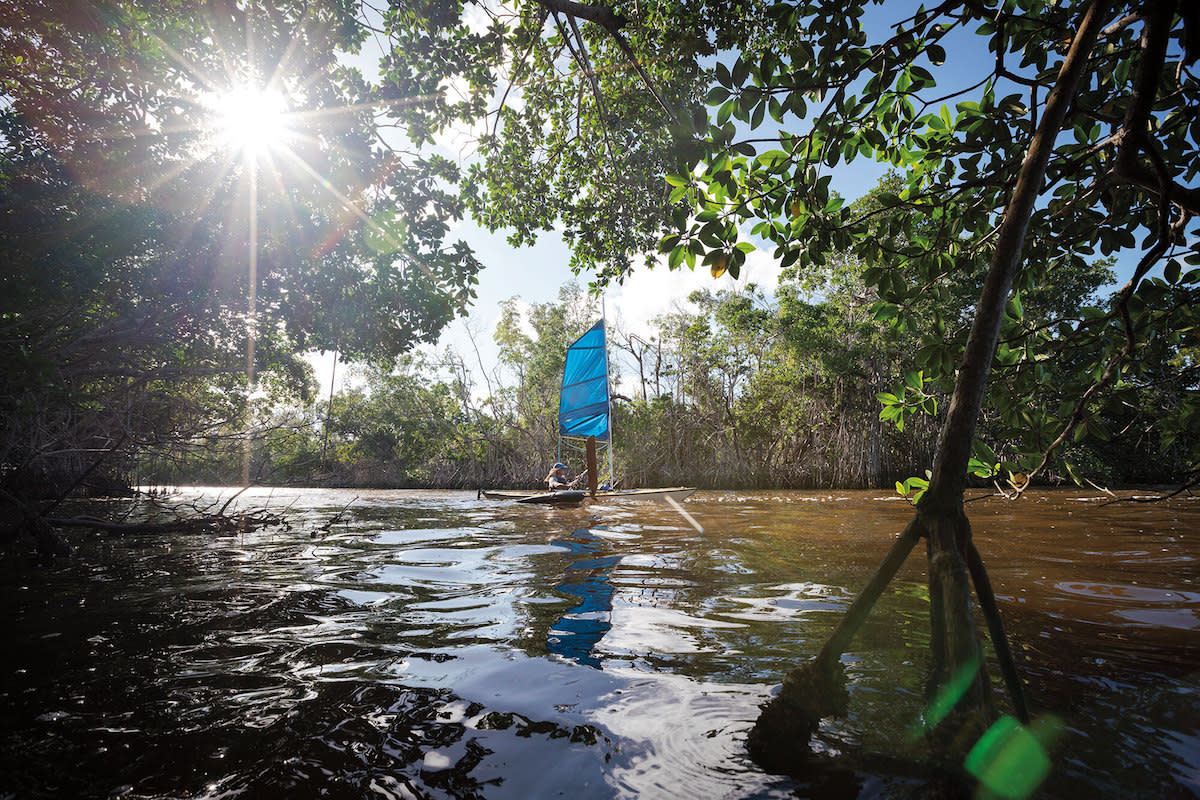
I arrived to the Everglades to see if America’s most endangered countrywide park experienced taken its final breath. In 1947, the exact same year the park was set up, the journalist Marjory Stoneman Douglas—who grew to become renowned for her attempts to preserve this place—published The Everglades: River of Grass. In the last chapter, “The Eleventh Hour,” she wrote “the Everglades ended up dying.” She explained a once-huge-however-diminished marsh, denied additional than 50 % of its lifetime-giving h2o, cooked by unprecedented wildfires, and polluted by sugar plantations.
In 1966, I initially frequented the Everglades throughout a subject vacation with my Boca Raton quality faculty and the place—filled with God-only-appreciates-how-lots of bugs—spoke to me. A ponderous river ran across and underneath the swamp, watering over a thousand various crops, haunted by famous creatures like the Florida panther. I saw additional than a couple of of the 360 various vibrant and prolonged-legged birds that waded along with alligators and crocodiles—the only location in the environment where by these two reptiles cohabitate.
The park alone stretches over 1.5 million acres—as major as Delaware, but with no streets main as a result of its two ends, just a wilderness of h2o stuffed with unpredicted, subtropical critters amid an amazing panoply of nine various habitats. For virtually a 50 %-century (until eventually Loss of life Valley was set up), it remained the greatest countrywide park in the Decrease forty eight.
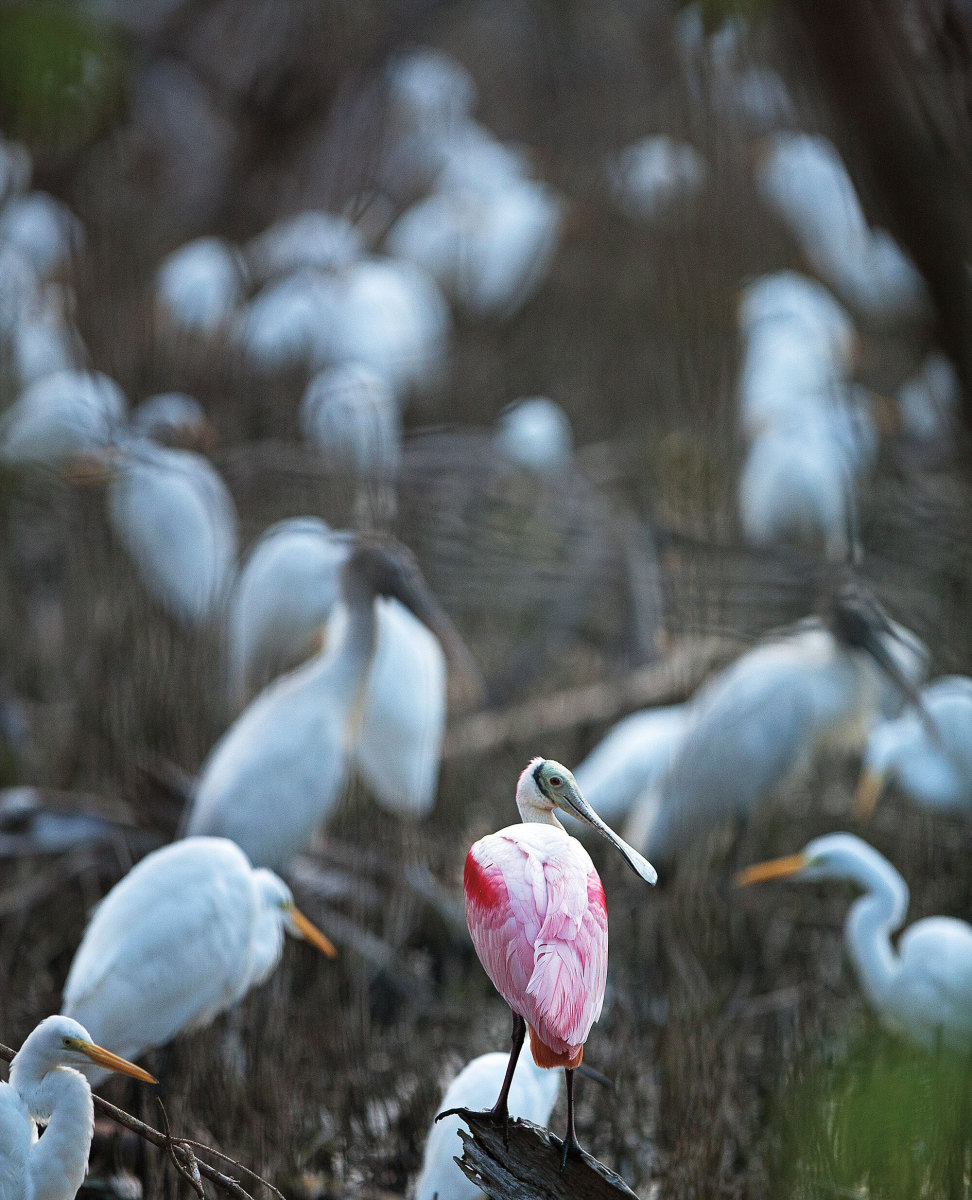
As a 10-year-old in want of experience and male mentorship, I watched an airboat skim as a result of a broad sawgrass prairie and imagined poachers chasing wildlife—conjured up by my favored Television set demonstrate Everglades, featuring larger sized-than-lifetime park ranger Lincoln Vail.
Along with that Everglades visit, people indelible adolescent decades dwelling with my grandmother even though sailing and fishing in South Florida set a hook: I would turn out to be an avid chicken-watcher, a reside-aboard sailor and fisherman, a countrywide park ranger, and a lifelong explorer. In the meantime, the historical Everglades—and Florida itself—continued its precipitous drop.
South Florida’s populace grew to over 6 million as the 60-mile-extensive by a hundred-mile-prolonged River of Grass ongoing to dry up. In buy to build the coasts and farmlands, the U.S. Army Corps of Engineers was tasked with draining the swamp with canals. Considering the fact that twentieth-century bureaucracies gravitated towards advancement-oriented flood command instead than environmental restoration, couple of recognized or cared that the Corps was draining the lifeblood of the Everglades.
That is until eventually 2000, when Congress authorized the Detailed Everglades Restoration Strategy (CERP) to bring desperately essential freshwater back to the wilted countrywide park as a result of an expensive, albeit visionary, h2o engineering approach. And ironically, the ambitious environmental restoration job was handed to the exact same Army Corps of Engineers that drained the swamp to start off with. The other irony, of study course, is that this huge effort and hard work to re-h2o a fast drying ecosystem runs counter to the park’s other existential risk: at any time-growing sea ranges.
A 50 %-century after my initially visit, I returned to see if these mystical wetlands nevertheless experienced the exact same capacity to encourage me. In late February, I embarked on a comprehensive kayak crossing of the park with 3 buddies—Greg Bellware, Robin Deykes, and Chris Korbulic—starting from the mouth of one particular of the drainage canals. Or, what would have been its terminus. Whilst this waterway experienced initially been designed to divert floods and supply accessibility for boaters, growing sea ranges forced this and other park canals to be dammed to preserve saltwater out of freshwater wetlands. In close by Important West over the final century, NOAA has recorded a 9-inch ocean rise caused by local climate transform.
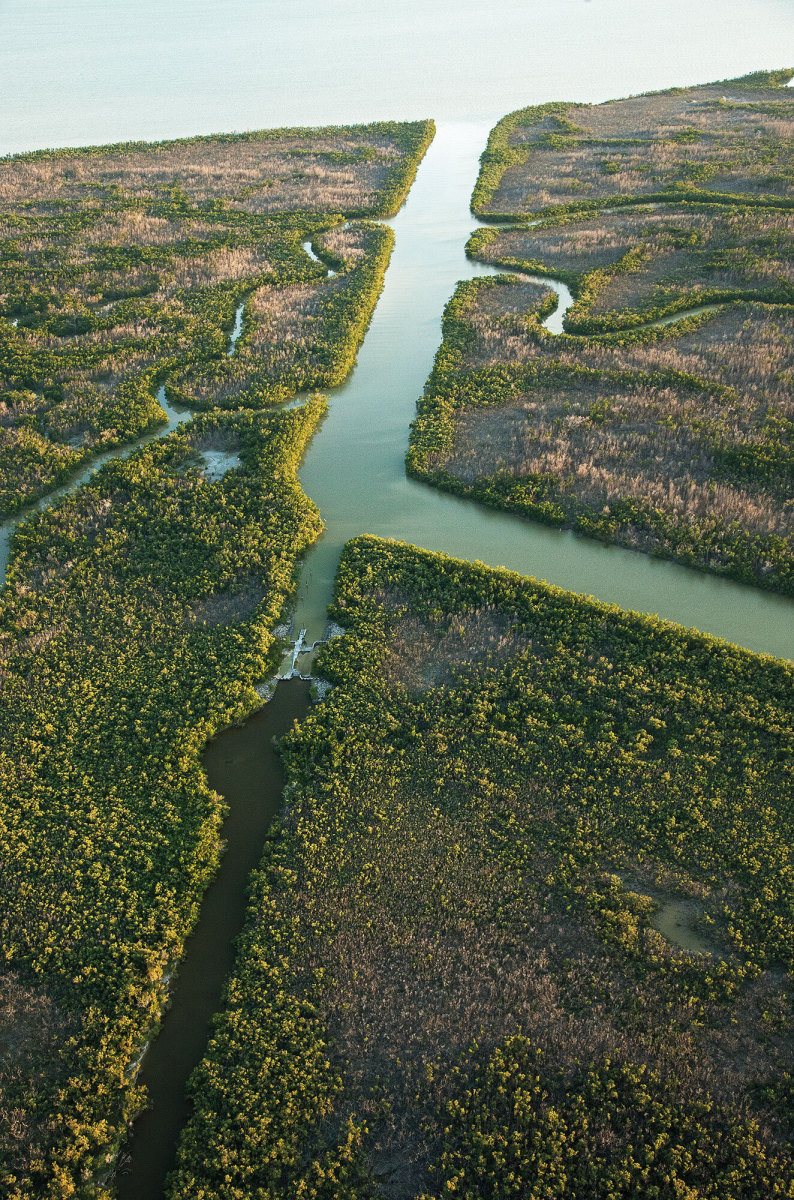
We began at the conclude of the highway, on the southern idea of the Florida peninsula, launching along with park tourists ogling manatees and alligators off the boat ramp by the Flamingo typical shop. From this 50-foot-extensive dammed canal, our route would just take us from the southern park, as a result of the Wilderness Waterway, and out into Gulf of Mexico waters as we labored our way ninety nine miles north to Everglades City. Past the dam at the rear of us, the island-dotted Florida Bay estuary—no lengthier recharged by enough quantities of freshwater—had just lately gone hyper-saline, killing most of the underwater seagrass and destroying fish habitat.
The ensuing financial fallout for fishing guides is only a small component of the park’s mounting difficulties. There is nevertheless harm from Hurricane Irma in 2017, two customer facilities beneath mend, a maintenance overload and, as in lots of underfunded countrywide parks, a lack of staffing to take care of the myriad operational troubles. The park was open throughout final year’s govt shutdown, and even though no considerable damages ended up described, this conclude of the park would be completely shut down throughout the coming COVID-19 pandemic.
Two hrs later, Greg, Robin, and I caught up to Chris in Coot Bay. With a breeze chopping the h2o, we still left the protected canal, reefed our sails, pushed down the leeboards, and sped across the wind. Over us, an endangered kite streamed its forked tail like two trailing legs, tracing the rich, green shoreline from the air in research of apple snails.
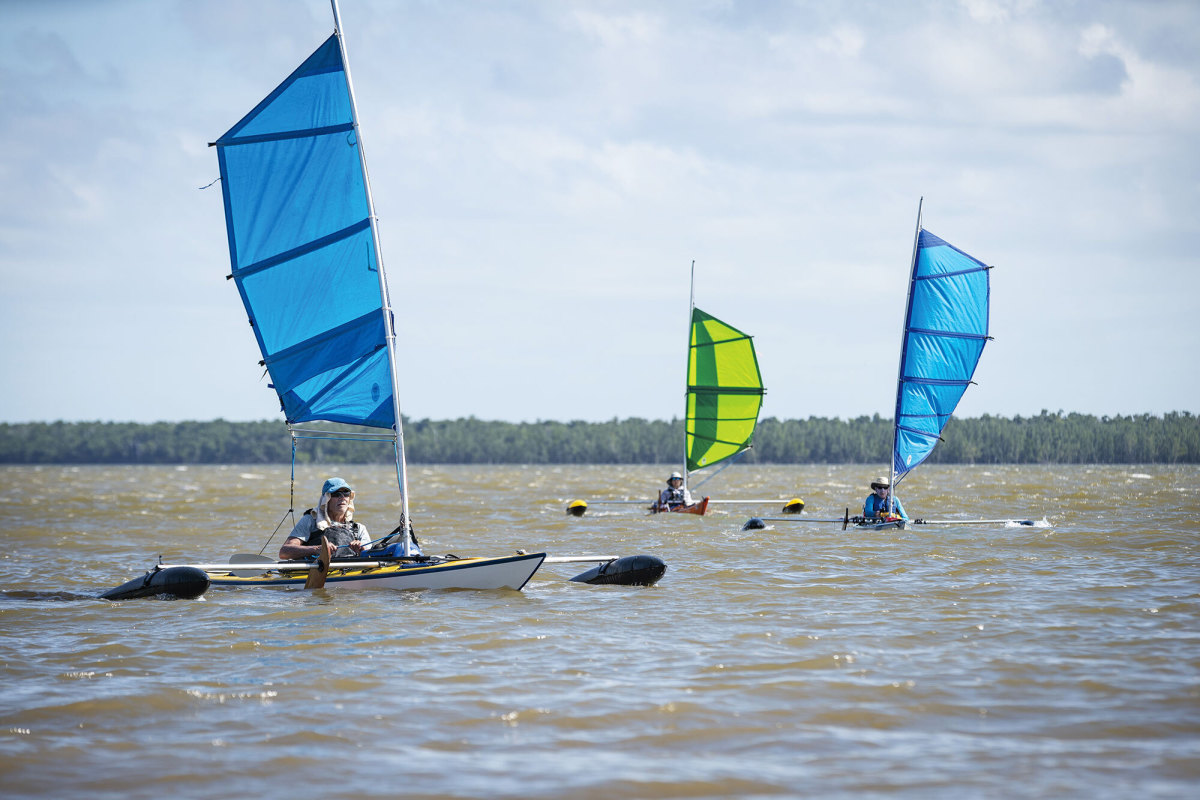
A veritable jungle of salt-tolerant mangroves—the greatest contiguous protected forest of its form in the Western Hemisphere—surrounded us. The hardy trees also act as a coastal barrier and shelter for many animals and fewer salt-tolerant inland crops. Yet the smell of hydrogen sulfide gas wafting out of the forest is an exigent reminder of the decaying mangroves that lie beneath the floor, lots of of which ended up killed in Hurricane Irma virtually 3 decades back. Along with additional regular and effective storm surges, the ocean is growing on this flat coastline up to 3 moments a lot quicker than that of the world-wide common. As saltwater breaches the mangroves, it reaches other freshwater flora these types of as the park’s dominant 6-foot-tall sawgrass. These crops expand in the carbon-rich, peat soil backbone of the Everglades, keeping it in location, even though also facilitating the generation of new soil. But as saltwater exposes and kills freshwater plant roots, that backbone collapses. Now, brackish ponds are slowly subsuming the sawgrass prairie, turning the Everglades as salty as a 50 %-empty margarita goblet. To a South Florida ecologist, peat collapse holds the exact same probable for ruination as the droughts, wildfires, melting glaciers, and thawing permafrost uncovered in other countrywide parks.
Inspite of the smell, the tentacle-rooted mangroves in the Wilderness Waterway appeared intact, however not possible to tent in. So, as the sunlight dipped into the Gulf of Mexico, the mild tinged saffron, and we steered up a narrow channel of the tide-pushed South Joe River towards our permitted chickee tent platform.
Our floating campsite held an eight-foot-tall portable bathroom and two uncomplicated, open-air roofs. With the motorboat-made platform many ft over the h2o, offloading a tippy kayak demanded the coordination and poise of a nimble athlete. As Greg—a veteran of innumerable triathlons—struggled to wrest equipment from his tiny rear hatch, he fell backward into the h2o with our evening meal bag, his shouted expletives a scant defense versus hungry alligators. At some point, we chased down our mac and cheese even though observing an anhinga perch statuesquely, hanging its wings out to dry.
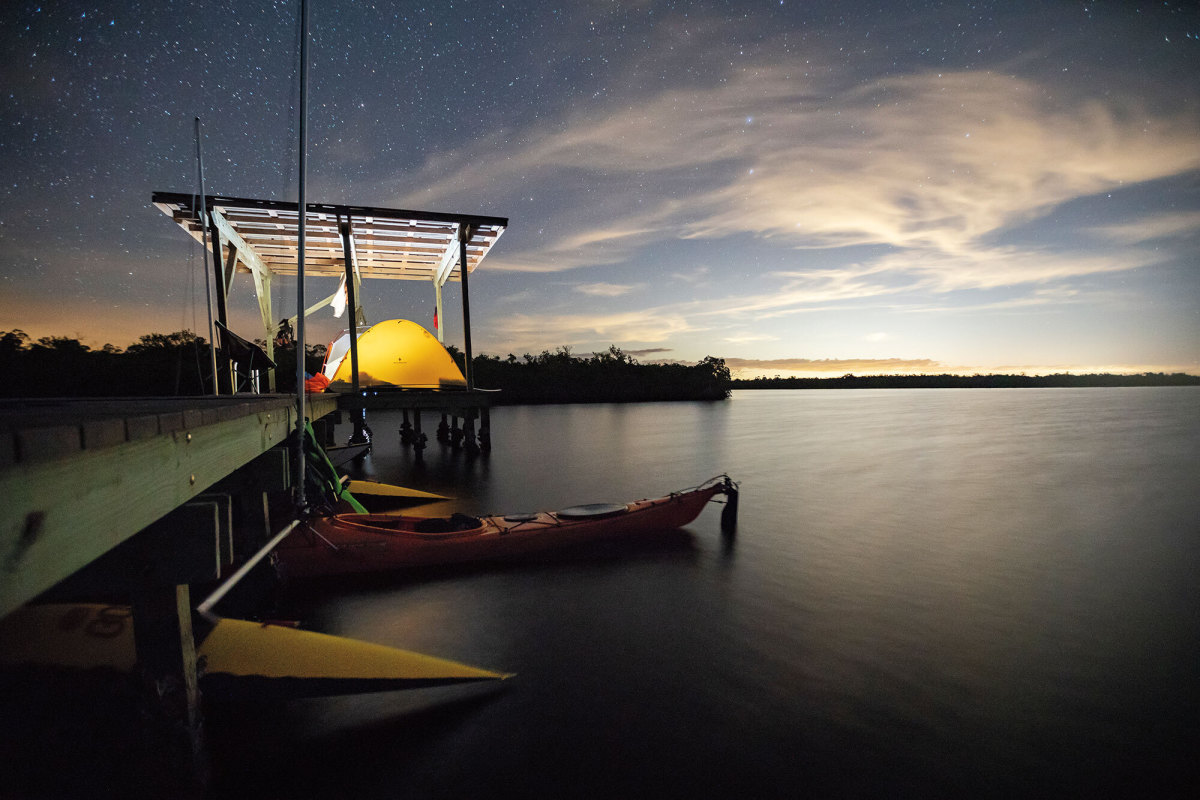
In the early morning, we ended up elated to obtain the wind ongoing to favor our northern journey. As a sailor, I experienced been drawn back listed here in component since of what Douglas, grandmother of the Everglades, explained in her guide as steady southeast trade winds that “pour across the land their awesome stiff tides.”
As the sunlight painted the mangroves a outstanding lime, we lifted our sheets, tacked out into the bay, then turned north and ongoing together the narrow channel. Quickly ample, the wind stiffened and snapped limited versus the sails.
Tarpon surfaced and rolled like bulbous snakes as wind stirred the surf. Whilst halting in the lee of islands, we consulted the satellites on battery-powered Garmins and tracked our development on a water-resistant map.
Usually next the wind, we picked the northernmost channel out of Oyster Bay, across the Shark River delta, and out versus an incoming tide that flowed into the Everglades, in the opposite way of its once-mighty headwaters. Maps can’t preserve tempo with this fluctuating labyrinth of channels, so we now deferred to Greg’s Garmin, until eventually we popped out and absent from the tidal latest into Ponce de Leon Bay. Somehow Chris stored us in sight as we all but flew across a bouncing sea. We attained the Graveyard Creek campsite at 3 p.m. For a park with over 1 million visitors a year—February currently being a key time with over two,000 allocated camper days—the fact we’d found only one particular other canoe the total working day goes to demonstrate how broad the Glades are.
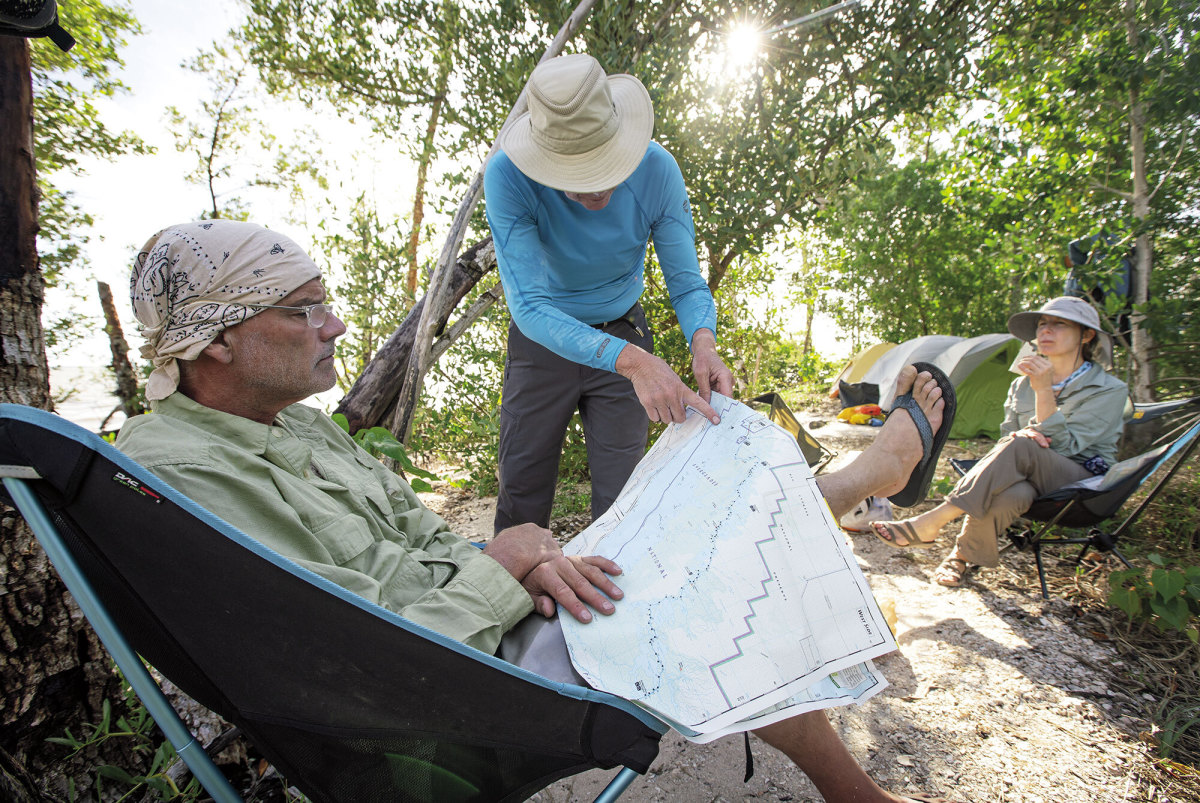
White ibis congregated on the opposite seashore. Pelicans sat atop snags waiting for the tide to transform. And upstream, a roseate spoonbill wagged its rounded, spatula-sized mandible underwater—the creature stood as an otherworldly pink existence in the shadowed tunnel. If these wading birds, indicators of the ecosystem’s overall well being, at any time disappear, it’ll imply that the drying Everglades too—along with all the chicken habitat—are lastly dead.
Swatting at the mosquitoes in a chair, I wrote in my journal, “It’s an ugly campsite surrounded by a seashore of quicksand silt that will give us difficulty leaving in the early morning at low tide, but it is the coronary heart of the EGlades, alive with who appreciates how lots of bugs and dense, absolutely unwalkable terrain. With prolific sharks and substantial reptiles, to swim it you’d be giving your lifetime absent. In other words, it is wonderful wilderness.”
Inspite of any requisite struggling that you need to initially pass as a result of, wild locations are a balm for the soul, where by we can leave our details age at the rear of and reconnect with the primeval. I go, in component, for the obstacle of navigating the infinite, for the pleasure of mastery in boating or climbing or skiing. But mainly I go to view the stars shiny over the treetops in a environment where by we can breathe clear air and revel about the wind on our faces even though we link with wildlife in the visceral, intuitive way that our looking ancestors once did. I have sought out the joys of remote areas even though boating source to sea on the Colorado River, paddling across the Northwest Passage, climbing Denali in the wintertime, and sailing the Pacific. But when I learn of wilderness at risk—in a wetlands as treasured and special as the Everglades—I experience that a piece of our American heritage is currently being violated. This protected acreage belongs to everyone as a democratic correct, to be preserved in perpetuity for long run generations. So, if we carry on destroying the Everglades, the congressional mandate of preserving countrywide parks will turn out to be meaningless.
The wind dropped and the setting sunlight doused alone into the Gulf. Then I plunged into my individual internal twilight as biting midges arrived in grey clouds, impervious to insect repellent, burrowing beneath our bandanas and hats. Whilst the mosquitoes of the Arctic and the blackflies of New England simply involve a Buddhist serene, the onslaught of what South Floridians phone sandflies—their moment tooth sawing tiny, burning cuts into your pores and skin, potentially transmitting parasites—force retreat to shelter.
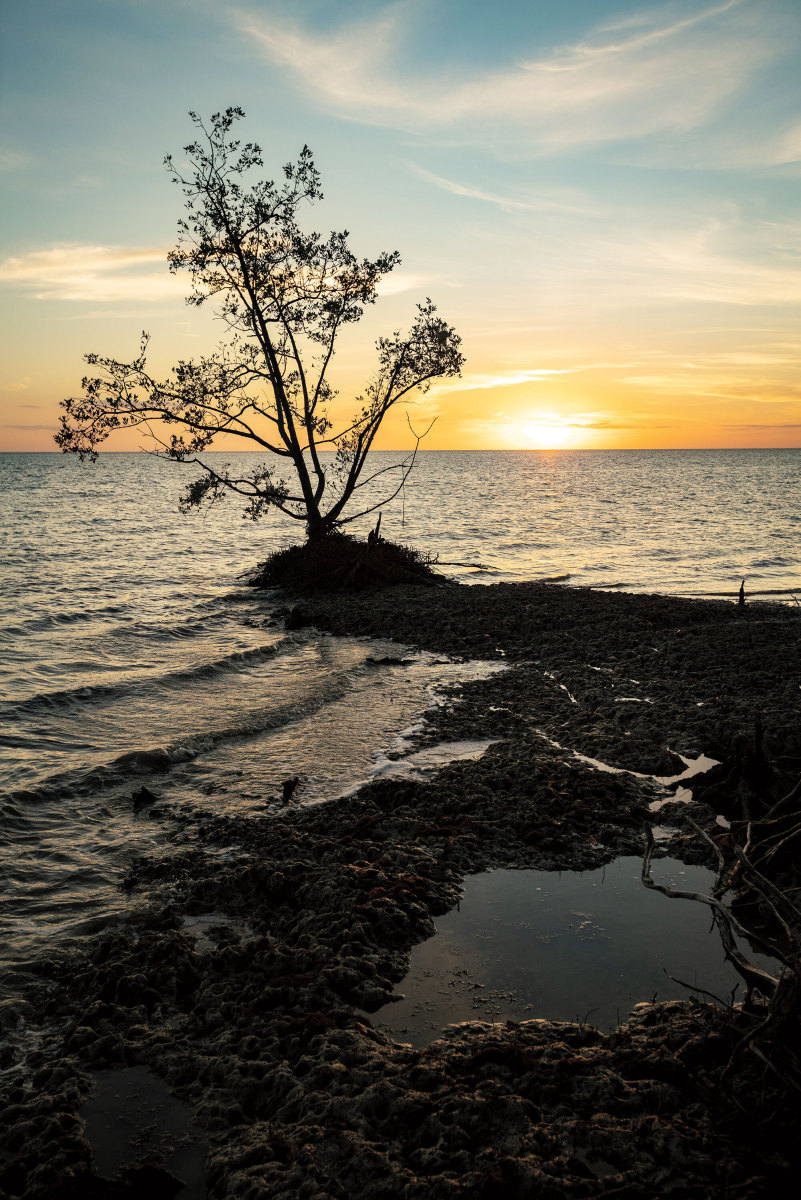
Like most evenings listed here before bedtime, I invested 15 minutes crushing insect friends versus nylon walls, wondering how the Dalai Lama—famous for sparing bugs—would survive the night time. Even the tireless enviro-crusader Douglas most popular breezy picnics to tenting in the world’s foremost swamp. “It’s too buggy, too moist,” she wrote, “too frequently inhospitable.”
30 yards absent, the imperturbable Chris tried out to escort his winged friends out of the tent. Yet he, too, was pleased to be listed here, in his comfort and ease zone and no lengthier concerned about reptiles (the smallish American crocodile, after all, is not a man-eater). Until finally now, he experienced journeyed to locations of roaring h2o and abrupt geography that necessary break up-2nd selection earning in his kayak. But in Florida, amid an all-encompassing flatness, he was stricken by this broad land, 50 %-immersed by h2o. The Everglades need nothing at all fewer than all of your awe.
On our fifth working day out, sailing in sight of the 10 Thousand Islands at the northwestern edge of the park, loggerhead turtles popped their softball-sized heads up, grinned, then ducked back beneath as we passed.
Somewhere beneath me, too, would be manatees and additional than a dozen species of sharks. I pulled my trailing hand out of the tropical h2o and back into the cockpit. Just then, a curious bottlenose dolphin dared to tactic my outrigger and exhale a spumy pong that smelled as rich as low-tide mud beach locations.
We patiently plied the dying southern trade, as we labored our paddles beneath the sail and stored our northern study course. To starboard, we studied the virtually 1.3 million acres of Marjory Stoneman Douglas Wilderness (amid another 200,000 acres of countrywide park). Piles of dead seagrass lay mounded up on the beach locations. Past the impenetrable mangrove hedge, the space experienced been more safeguarded (after it experienced previously been created a park) by Congress beneath the 1964 Wilderness Act. To defend its rich biodiversity, this wilderness space is meant to remain bereft of improvements, preserved exclusively in its organic conditions— irrespective of a jet from a close by army foundation frequently thundering as a result of the seem barrier over us.
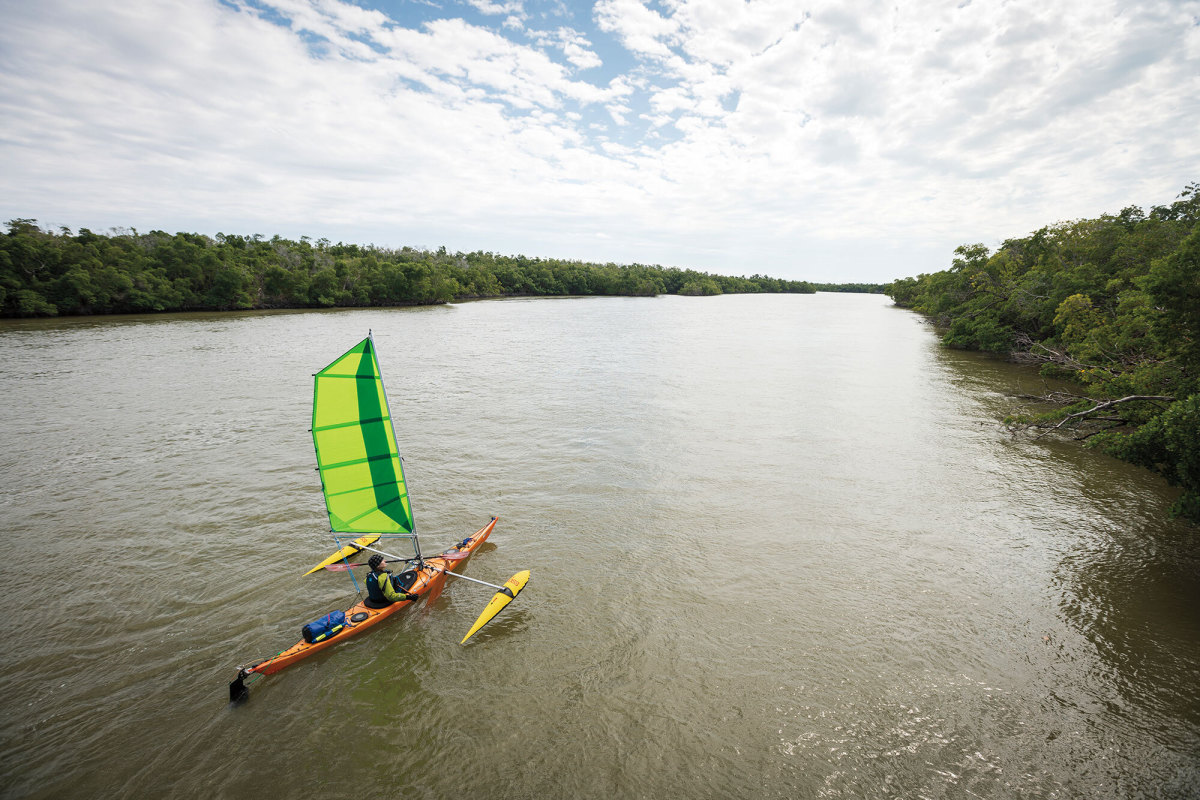
Even in the wildest reaches of the Everglades, it is tricky to leave civilization absolutely at the rear of. Following listening to information of an incoming storm on Greg’s weather radio, we opted to velocity up our vacation and go farther north to Jewel Important. We pulled up to an idyllic seashore after a pleasurable seven-hour sail. In pellucid waters, seemingly cost-free of predators, I stripped down and took the week’s initially tub, protectively cupping the loved ones jewels—just in scenario.
Whilst observing an osprey carry a fish to its nest, a park assistance motorboat landed on the seashore and broke our reverie. Out stepped a uniformed ranger, stiff and anxious, the antithesis of Lincoln Vail, demanding to see our backcountry allow. I stated we experienced switched campsites since of the incoming storm, but the ranger was only intrigued in the letter (instead than the spirit) of the legislation. It would price tag us $one zero five. My decades of assistance in the parks meant nothing at all to this armed and obnoxious policeman.
Nor did the 3 unlawful campfire scars he stood subsequent to on the seashore. Following he still left, I chucked the toasted coral back into the sea and distribute out the ashes. Then we gathered driftwood for a (legal) campfire down in the littoral that would be flushed clear by superior tide.
As the north wind fanned sweet smoke from our burning mangrove logs, I understood that all of this—the Milky Way phosphorescing over us, our times doing work the wind even though observing birds, and even the excellent bugs—had drawn me back to the swamp after so lots of decades.
And as a result of encountering the unpredicted resilience of its animals, together with the dizzying marvel of its lots of plant species, I imagine it must be saved as anything wilder and additional sacred than an synthetic “Disneyland Everglades” (as an Army Corps formal has referred to as it). And he might be correct, at the very least partly, since we’ll never get back the pre-get hold of Everglades. Whilst the wetlands are now fewer than 50 % of what they applied to be, we nevertheless have an obligation to preserve what stays, not contrive some variety of concept park. Following all, this is legislated wilderness. We’re previously fully commited.
To restore the River of Grass, it’ll just take additional than just political will. The most urgent challenge is normal funding that would infuse 17 various uncompleted CERP assignments, these types of as a prepared reservoir just south of Lake Okeechobee, to keep and launch h2o into the wetlands throughout the dry period. Considering the fact that the $eight billion method began in 2000 as a 30-year approach, CERP has now turn out to be a 50-year, $15 billion aspiration.
Nonetheless, there is hope, offered the science and engineering at the rear of CERP. If the Corps can replumb the Everglades and bring back its freshwater head (the River of Glades) from the north, it would produce a backpressure to stave off the storm surges and ocean rise in the south—now beginning to salinate both of those the wetlands and the freshwater aquifers sustaining tens of millions of Floridians.
There are other troubles at hand too, these types of as tens of 1000’s of Burmese pythons slithering amongst the Glades as one particular of over a hundred various invasive crops and animals pushing out indigenous species. To cope and help restoration, we want a entirely funded park assistance with management which is additional intrigued in resource administration than overzealous legislation enforcement. We also want everyone to have an understanding of how the clock is now jogging out on America’s most amazing wetlands.
We want to heed the words of Marjory Stoneman Douglas: “There are no other Everglades in the environment.”
As the squall hit Jewel Important after dim, my companions shouting back at a violent wind gust, it appeared epiphanic how this swamp that belongs to all of us offered up the exact same sense of shock and attract I experienced felt as a boy. And in the 50 %-century that experienced passed, I have never found another wilderness like it.
I dove into the tent, flattened by the wind, turned on a headlamp and braced the walls with my arms. Not an insect visitor to be uncovered.
For accessibility to distinctive equipment videos, celebrity interviews, and additional, subscribe on YouTube!
